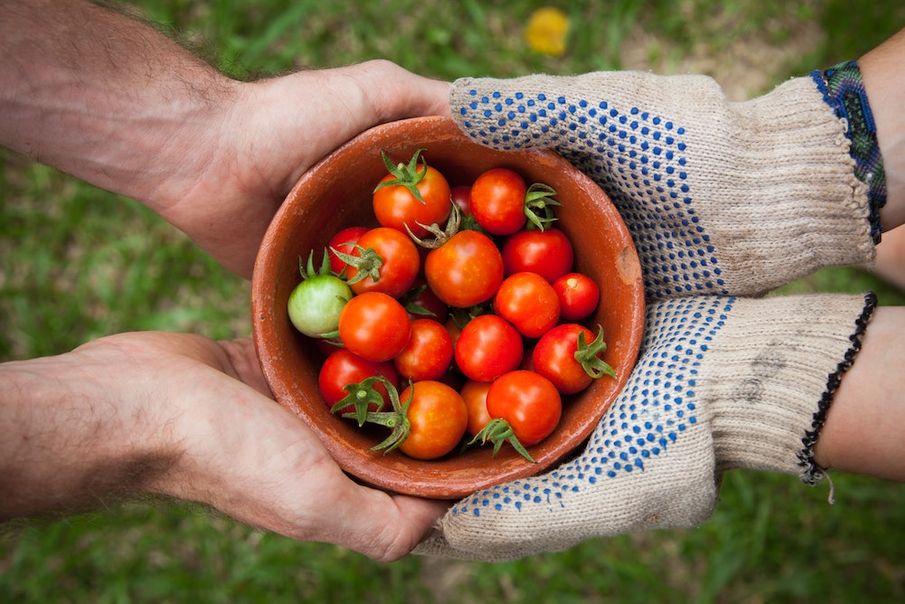Ever wanted to tend to your own little vegetable patch? Well, there’s never been a better time to start. Here are six top tips to help you dig in
Creating personal access to green space has been proven to boost self-esteem, reduce anxiety, and even decrease your cortisol levels (the stress hormone) in the body. Whether you’re growing lettuce for your salads, or herbs for your G&Ts, there’s never been a better time to get outside, and get growing.
You don’t need a huge allotment, or a big garden to grow your own. Even the most compact space can be turned into a flourishing herb and veg patch with a raised planter – or even a few pots on a windowsill or balcony. ‘Grow your own’ can seem an intimidating phrase, but the journey from plot to plate doesn’t have to be complicated.
Go for varieties you can’t buy in supermarkets
Supermarkets usually pick varieties that survive the rigours of picking, transport, and display – so flavour and nutrients are not the top priority! Why not try veg and herbs that you can’t get in shops? Your crops will be of a much higher quality in both nutrients and taste. Try French and red veined sorrel, which have a zingy, fizzy lemon taste (think sherbet lemon), and are among the most reliable and long-lasting crops you can grow.
Sort your seeds
When choosing seeds, avoid those that take too long to reach maturity, such as parsnips which can take up to 180 days. Ideally, your crops will take no more than 90 days to reach maturity.

Illustration | Rosan Magar
For beginners, trying to grow your own ‘lettuce bag’ is a great place to start. The seeds are cheap, readily available, and germinate and grow reliably. Good varieties to try include mustard ‘red giant’, mizuna, mizuna ‘red knight’, mustard ‘golden frills’, mustard ‘red frills’, plus spinach ‘red kitten’, and rocket ‘serrata’. The leaves have a peppery taste which runs from mild in ‘mizuna’ to hot (occasionally fiery) in red giant.
If these lettuces turn out to be a bit too hot to handle, you may want to opt for something sweeter tasting, in which case black seeded simpson, cocarde, and oakleaf smile are likely to fit the bill.
Limited space? No problem
Try for varieties that have a compact form. Tom Thumb ‘pea’ produces full-size pods, but only grows to 25cm (less than a third of most podding peas). Others include stripy ‘piccolo’ courgettes, yellow ‘summer ball’ courgettes, and ‘pot black’ mini aubergines. You can also harvest crops as ‘baby leaf’ before they reach full size.
Think about where you grow
Growing veg in a shady (cooler) corner can provide great conditions for crops like lettuce, spinach, rocket, radish, and chard – so the situation is far from helpless!
Herbs can be quite demanding in their requirements, which makes a raised planter or container an ideal choice. You can also move your container into full or partial shade, and water little or more often, based on the herb you wish to grow.
Even in a small space, you can easily grow the equivalent of two salad bags of lettuce per week
Pick your leaves
Supermarkets tend to grow lettuce, and cut them as very young leaves. This is quite a wasteful method, and means that plants become rapidly exhausted. A much better way is to allow leaves to reach mid-size before they are picked, in order to let their flavour fully develop. Try to pick leaves individually at the base of the plant, which causes less stress and stimulates new growth.
When growing herbs, the key is to pinch out their tips, and pick them regularly – this will prevent the plants becoming ‘leggy’ and flowering. This isn’t disastrous as it will often produce a fantastic seed head (a winner for bees), but will end the production of a new leaf!
Enjoy your guilt-free veg
Even in a small space, you can easily grow the equivalent of two salad bags of lettuce per week, enough for a round of sandwiches for the whole family every day – and it’s an easy win on all the vitamin C you need.
There is something fulfilling in taking ‘time-out’, picking a colander of lettuce at the beginning of each day, and appreciating the simplicity of the exchange of effort for reward. What’s more, at the end of the year you’ll have saved at least 104 currently ‘not recyclable’ cellophane packets from going to landfill – to which more than 810,000 tonnes of plastic containing ‘fresh produce’ goes every year.


Comments